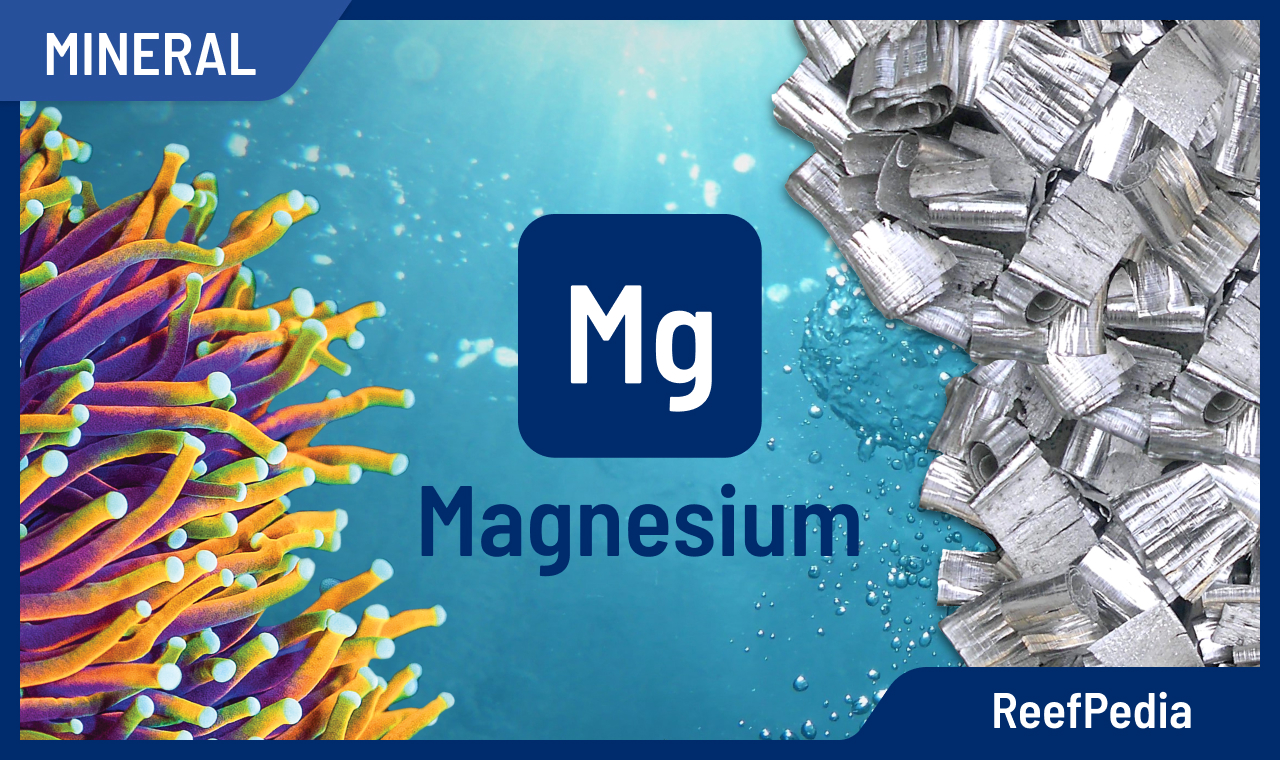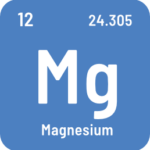 What is MAGNESIUM (Mg)?
What is MAGNESIUM (Mg)?
Magnesium is one of the elements with a high distribution in the earth’s crust (Mg 2.09%) and occurs in the form of silicate minerals and carbonates. In seawater, the content of magnesium salts reaches 0.5%. Chemically, magnesium is a silvery-white metal that tarnishes rapidly in the air. It belongs to the beryllium group of the periodic table (Mendeleev table).
In seawater, magnesium (Mg) occurs mainly in the form of calcium ions (Mg2+). It is also part of the structure of chlorophyll, in which a magnesium atom is bonded to four nitrogen atoms (magnesium-porphyrin complex). Chlorophyll is an organic compound present in plants, algae and photosynthesising bacteria, among others.
The importance of magnesium in seawater
Magnesium is important for the growth of various marine organisms, including calcareous algae. Although it’s not needed by animals as much as calcium and carbonates, maintaining a stable calcium content in seawater is not possible without adequate levels of magnesium. Some living creatures, such as calcareous algae, clams and sea urchins, absorb larger amounts of magnesium. One of the most important tasks of magnesium is to help animals and algae assimilate calcium. Magnesium also affects the structure of coral skeletons.
Magnesium has an important function in inhibiting the calcification process in aquaria. The solubility of calcium in seawater is limited and is increased by preventing the formation of calcite (the crystalline variety of calcium carbonate, insoluble in water). Magnesium helps to reduce the precipitation of calcium in the form of insoluble calcium carbonate.
Problems associated with excess or deficiency of magnesium in seawater
Small fluctuations in magnesium values (20-30 mg/l) in seawater are not significant for calcium uptake, although fluctuations should be avoided as they can lead to high carbonate consumption.
Magnesium values that are too low cause a number of animal health problems and significantly affect other water parameters, mainly Ca and KH. When magnesium drops below 1000 mg/l, it is difficult to keep calcium stable above 300 mg/l.
Too high magnesium values result in unnaturally high carbonate or calcium consumption. High concentrations of magnesium are still acceptable up to values of around 1600 mg/l (ppm). Higher values cause a chemical imbalance in calcium supply, lead to tissue dissolution in soft corals and tissue detachment in SPS corals.
How to protect the aquarium?
The magnesium content should be checked regularly and kept at the correct level. We recommend maintaining magnesium values of 1250-1450 ppm, with an optimum value of 1350 ppm. This level of magnesium in seawater ensures optimal growth conditions for the animals and thus health.
The Mg parameter can be controlled in several ways
1st: performing systematic tests of the magnesium content of seawater, at home, using drop test such as Mg Smart test kit from Reef Factory.
2nd: sending a sample of seawater for ICP analysis. If you chose Reef Factory’s Smart ICP-OES 1, in response, you will receive information in the Smart Reef app from Reef LAB not only on the magnesium content, but also on the other important macro- and micronutrients. The technique of atomic emission spectrometry with induced plasma excitation – ICP-OES (Inductively Coupled Plasma Optical Emission Spectrometry) is the most accurate method for analysing the elemental composition of seawater.
Recommendations
To ensure adequate magnesium levels in your aquarium, you should test your aquarium regularly and ensure that magnesium levels are correct.
If magnesium levels are above 1450 ppm, you should stop supplementing the seawater with magnesium preparations. High magnesium values cause a chemical imbalance in calcium supply. Find and eliminate the cause of the problem and lower the value of this parameter in the water. Check the dosing parameters on the dosing pumps and then carry out up to 6 water changes. It is recommended to change about 15% of the aquarium water volume during each change until the optimum value of this parameter is reached. The water prepared for the change must have the correct target salinity level. Use salt with the correct parameters and composition suitable for the ICP test.
In the event that magnesium levels are below 1,250 ppm, we recommend using a Magnesium product from the Minerals range from Reef Factory to equalise magnesium levels. The dosage is strictly defined in the recommendations found in the ICP analysis results report.
In order to ensure a constant magnesium level in the marine aquarium, we recommend systematic magnesium supplementation with the product Smart component Mg from the Reef Factory Smart components line.
About author

Magdalena Metzler
Privately, I am a mother and a lover of nature and sport. My main interest is quantum chemistry, which hides a whole lot of unsolved mysteries and connections, which is extremely exciting from a scientific point of view.
In my scientific career, I have conducted international projects focused on innovative solutions for many branches of business, e.g. automotive, construction, and now, of course, marine aquaristics.
Working at Reef Factory gave me a passion for marine aquaristics, which I can develop every day, building a chemistry department and creating products that will help aquarists take care of tanks and ensure the highest safety of animals.
One of the most exciting memories of working at Reef Factory is the commissioning of the ICP-OES spectrometer, which analyzes the elemental composition of seawater. The method of analysis in ICP is based on an analytical technique, which is a combination of my passion for quantum chemistry and marine aquaristics.
I hope you find my articles on ReefPedia interesting and helpful! Happy reading :))
Magda


 What is MAGNESIUM (Mg)?
What is MAGNESIUM (Mg)?